Student Blog
What are OS/OT?

Smell the Roses ⟩
January 17, 2017, by Erwin
Community Living in LA What are OS/OT?
Exciting things were happening in the world of OT during the holidays. On January 2nd, occupational therapy had the honor of having a float at the 128th Tournament of Roses Parade.
If you didn’t know, 2017 marks 100 years of occupational therapy. That’s an awesome achievement for our profession and a testament to OT’s contributions to society. The float is a celebration of our wonderful profession and provided exposure about what OT is to the millions of people that watch the Rose Parade.
In anticipation for our 100 years as a profession, the American Occupational Therapy Association decided on a centennial vision:
“We envision that occupational therapy is a powerful, widely recognized, science-driven, evidence-based profession with a globally connected and diverse workforce meeting society’s occupational needs.”
This float was an excellent opportunity to support our profession in meeting its centennial vision of being “widely recognized” and “globally connected”!
This float could not been done without the support of the Occupational Therapy Association of California, which sponsored the float, and its volunteers. Many USC faculty members and students dedicated their time to help with this awesome project, and being one of those volunteers, I can proudly say it was worth the time and effort! Read more about the float.
Here are some photos of the float and the volunteers that helped to make this float possible.

USC OT students, Alisa and Evelyn, helping decorate the float!
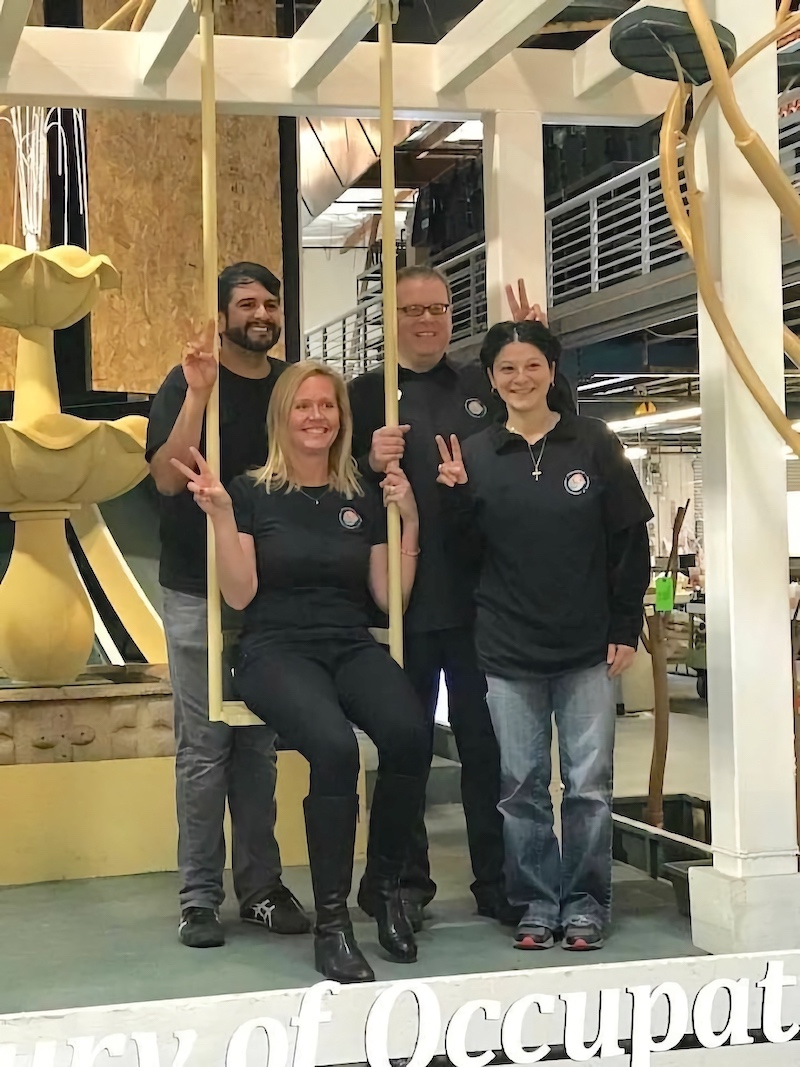
USC OT faculty members volunteered so much of their time to make this float a reality
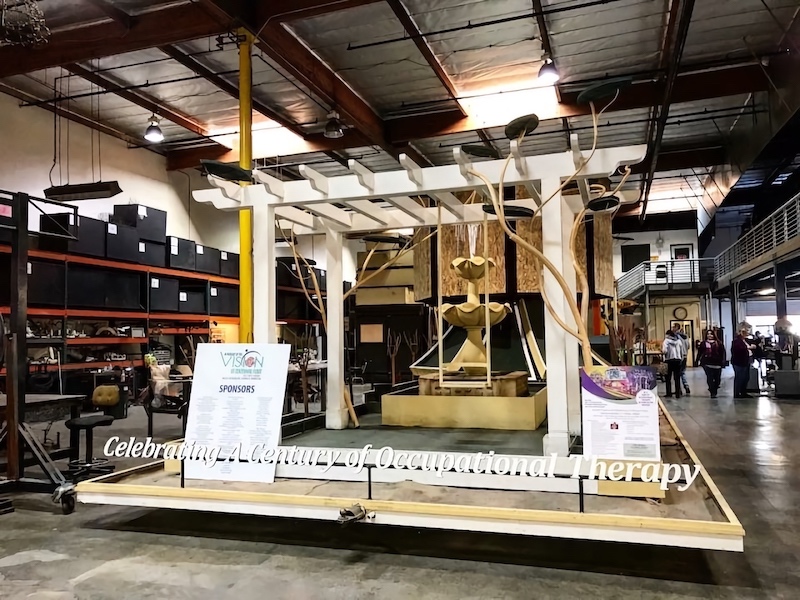
Early stages of the float
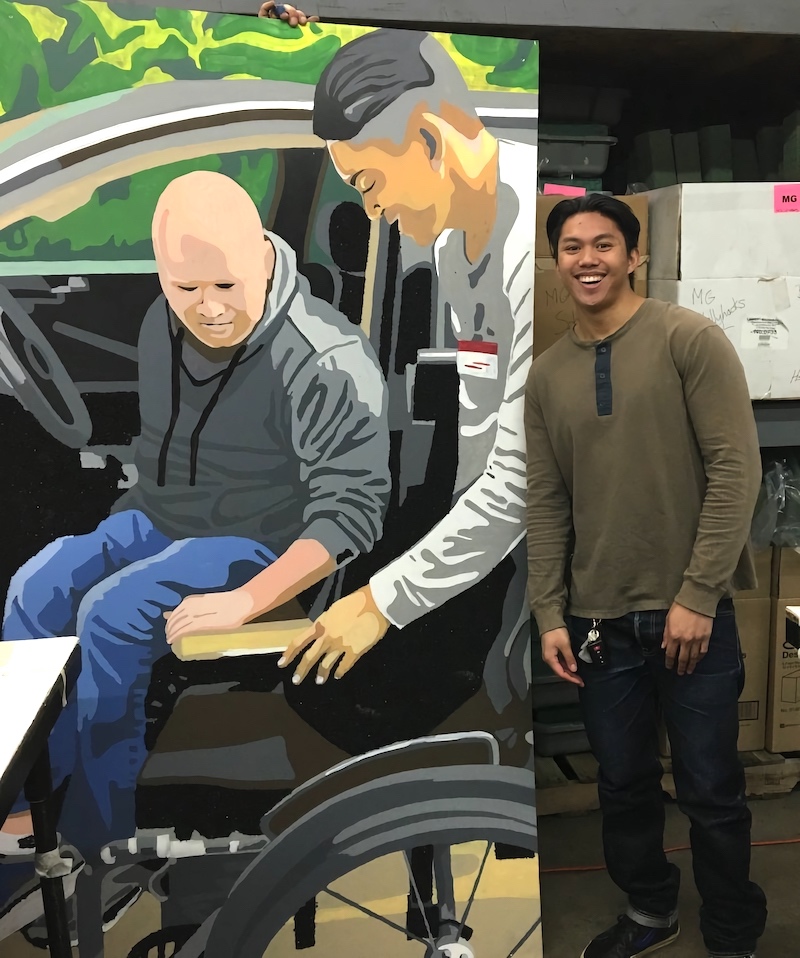
This guy on the float looks familiar

And here it is: the 2017 OTAC Rose Parade Float!
⋯

Hello 2017 and Hello Spring Semester! ⟩
January 13, 2017, by Raisa
Classes What are OS/OT?
Happy New Year everyone! I hope everybody had a wonderful end to 2016 and a positive start to 2017. The start of the New Year also marks the start of the spring semester, which means new courses and my last semester in the Post-Professional Master’s program.
I am stoked for the spring semester as I will be diving right into my practice area of interest, which is Adult Rehabilitation! Find out more about the USC OSOT courses.
Let me give you a breakdown of the electives I will be taking this semester:
- OT574 Enhancing Motor Control: This class provides an in-depth understanding of the role of OT, the domain of practice and occupation-based approach to adult rehabilitation in upper motor neuron syndromes. In this hands-on laboratory class, students will be able to interact with clients and clinicians for an integrated learning experience of both theory and application in the different approaches relating to Neurorehabilitation.
- OT573 Hand Rehabilitation: Students will be able to build a good foundation of the anatomy and physiology of the forearm, wrist, and hand; incorporating the science and the art of occupation into developing your clinical reasoning skills for occupation-based evaluation and treatment for common hand disorders.
- OT575 Dysphagia across the Lifespan, Pediatricts to Geriatrics: This course will give students a better understanding of the role of OT in the management of dysphagia cases from pediatric to geriatric populations. The class will focus on the OTs domain of practice, which will equip students with a firm foundation in the comprehension and treatment of swallowing disorders.
- OT577 Seminar in Occupational Therapy: This class provides students with an overview of the role and domain of practice of occupational therapy in different clinical settings and contexts. Seminar and class discussions will be done in order to integrate both theory and clinical practice in various healthcare settings.
USC offers a variety of electives which will equip you with the skills you need to become a well-rounded practitioner. Evidence-based practice (EBP) is also a common foundation that all these courses are built on, your future self will thank you for keeping up to date with the latest EBP trends. Some of these courses even go towards a completion of specialization or certification in your future practice.
I hope to grow as an Occupational Therapist with the help of the esteemed USC OSOT faculty and my Trojan Family. I look forward to this semester, and I wish everyone the best of luck in their endeavors! What electives would you want to take in the USC OSOT division? Shoot me an email, I’d love to hear from you!
Fight on!
Raisa
⋯

DIY This Holiday Season ⟩
December 7, 2016, by Kimmy
What are OS/OT?
One of my favorite occupations is holiday shopping, but so is crafting! A homemade present shows loved ones you really care and may even lead to a flow state for you. Not to mention, OT has its roots in the Arts and Crafts movement. In the coming weeks, embrace your inner Mary Reilly and use your hands to create Santa’s little workshop in your own living room to deliver the ultimate dose of holiday cheer
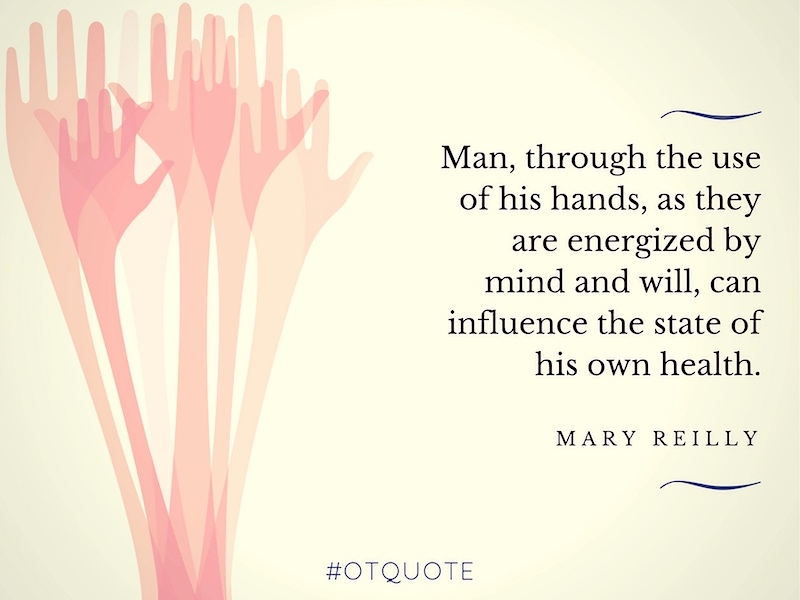
Here are some of my favorite crafts to get you in the spirit:
- Tie blankets will keep you warm and you can use for favorite holiday-themed fabric.
- Stress balls & heat packs are the perfect stressbusters to relax after finals week. Give them to your friends and family to help them stay calm all year, too!
- These peppermint candles will engage all your senses in the holiday spirit.
- Ornaments can be made with materials as easy as an old light bulb and leftover glitter. Or make these mini snowmen using tea lights.
- Reindeer cookies & Santa hat brownies can sweeten up any holiday party.
- A photo wreath is the perfect decoration to commemorate all the good times as the year comes to a close.

For even more holiday fun, try crafting with friends and family. After all, spending the holidays together is the greatest and easiest do-it-yourself present!
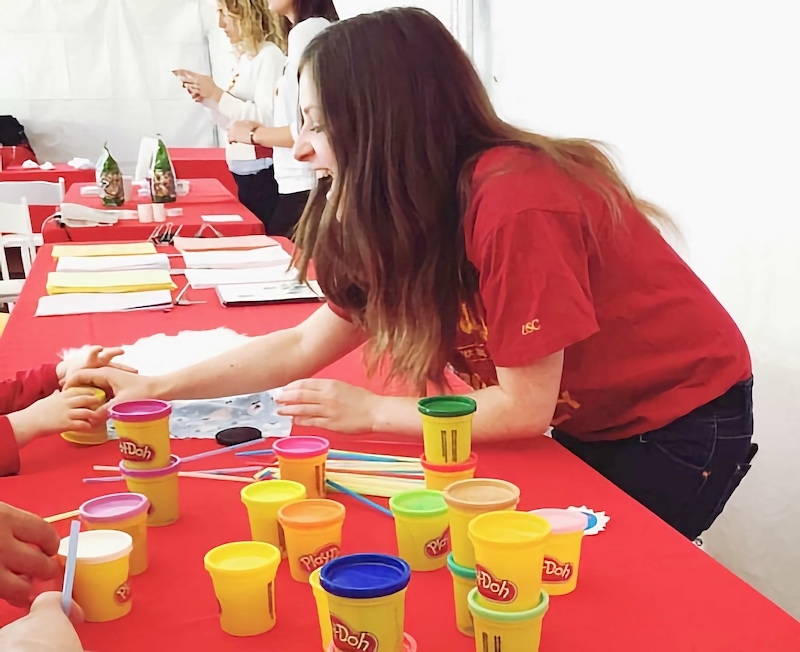
⋯

Cooking From All Woks of Life ⟩
December 5, 2016, by Erwin
Classes What are OS/OT?
For my last lab in the adult rehabilitation course, my classmates and I had the opportunity to cook using adaptive equipment. Not only was this lab delicious, but it was also educational!
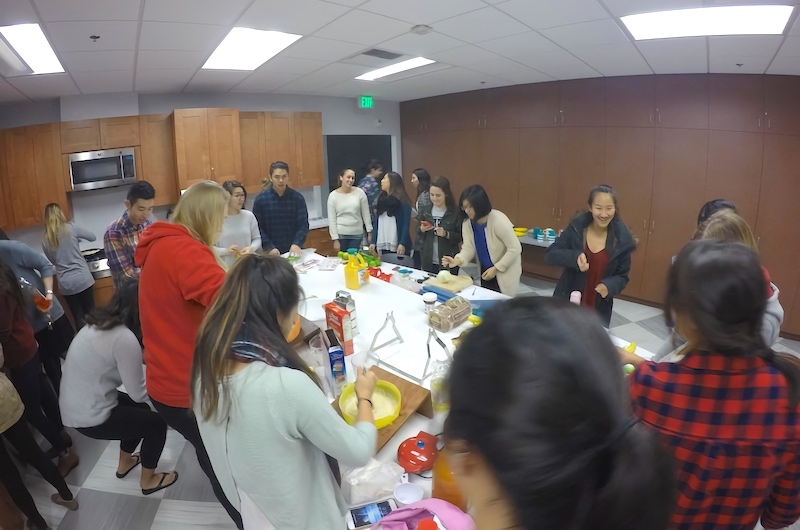
USC OT students getting ready to cook!
Sometimes, individuals can have difficulty completing cooking and feeding tasks after an injury. However, this does not mean they are not capable of cooking or feeding. Adaptive equipment gives individuals the opportunity to cook and feed independently.
In this picture, my classmates, Vanessa and Jamie, are using a rocker knife to cut mushrooms. Rocker knifes are especially effective for individuals that only have use of one arm. Rocker knifes use a rocking motion instead of a back-and-forth motion so that they are able to cut with one hand!
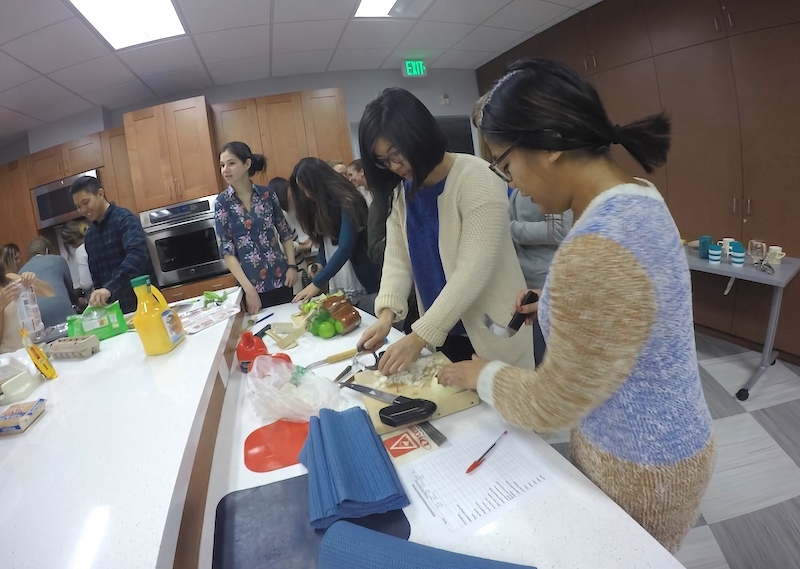
Students using a rocker knife!
In this picture, my classmates Shannon, Annie, and Amy are stirring pancake batter in a bowl holder. This device anchors the bowl so that someone with limited strength, in-coordination, or is only able to use one arm can meal prep in a bowl!
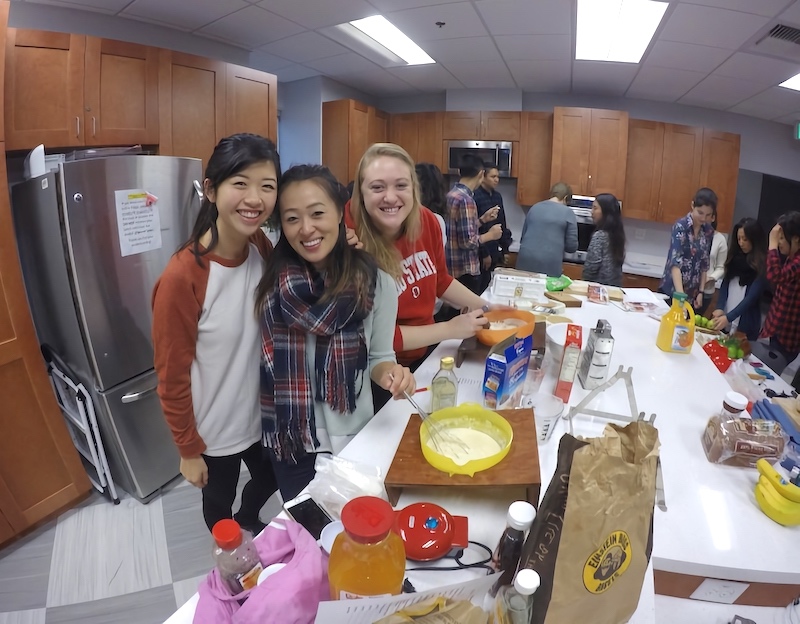
Students getting ready to make pancakes!
Even little things you may not notice can help individuals with a disability cook or feed. Our white countertops are not only stylish, but also have a purpose. People with low vision can have difficulty detecting items; so having a surface that provides high contrast and no patterns is helpful. Even the height of the counter is important. Having a counter that is at waist level is useful for people that use a wheelchair so they can work at an appropriate height.
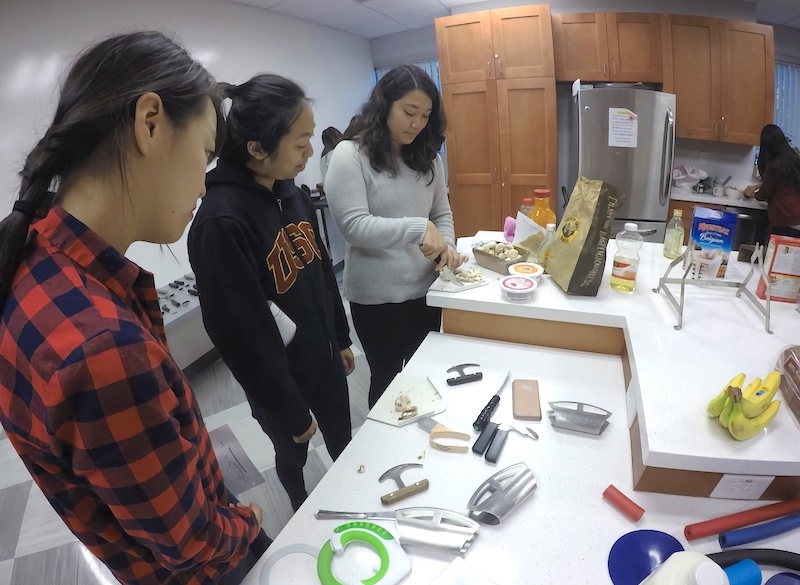
Showing off our universal design kitchen!
All of these devices and modifications are just the tip of the iceberg. Having a disability does not mean you cannot do something, and as occupational therapists, we should support independence for our clients!

Bon Appetit!
⋯

The Community Matters! ⟩
December 5, 2016, by Alyssa
Classes Community What are OS/OT?
Currently, I am taking OT 537: Occupation-Centered Programs for the Community! Specifically, this class is about finding a need within the community and developing a program to address it. With this purpose, you become familiar with the process of planning and evaluating a program, proposal writing, and addressing a prevalent health need. With an understanding and love for meaningful occupation, what better way to apply this knowledge and passion than to build and cultivate a program design! My classmate, Lauren, and I both have a strong interest in health promotion and wellness!
With this interest, we decided to research and develop a program within the workplace to address busy professionals with or at risk for developing hypertension. Our purpose was to educate and collaborate with this population in how to self-manage their health needs, incorporate healthy lifestyle habits into their daily routines, and engage in purposeful, occupation-based activities.
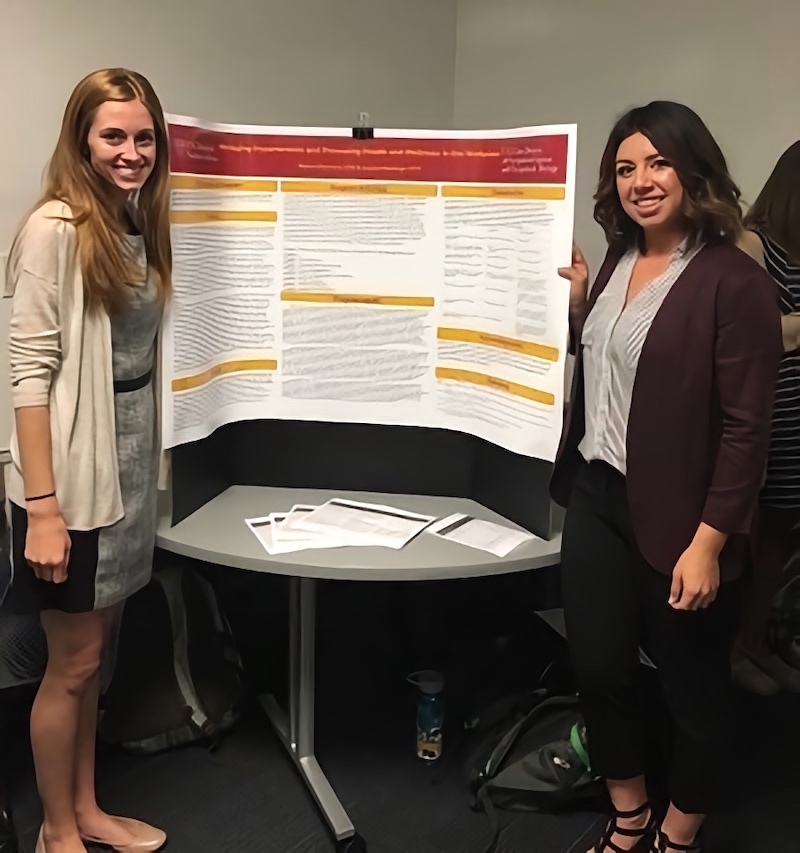
Our Poster!
In addition, if you would like to learn more about the other courses offered within in the entry-level Master’s program, I highly encourage you to do so. 😊
⋯





